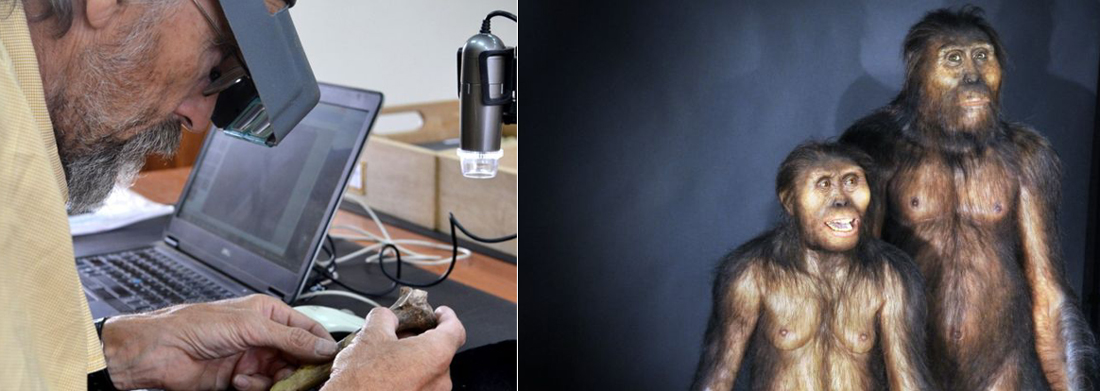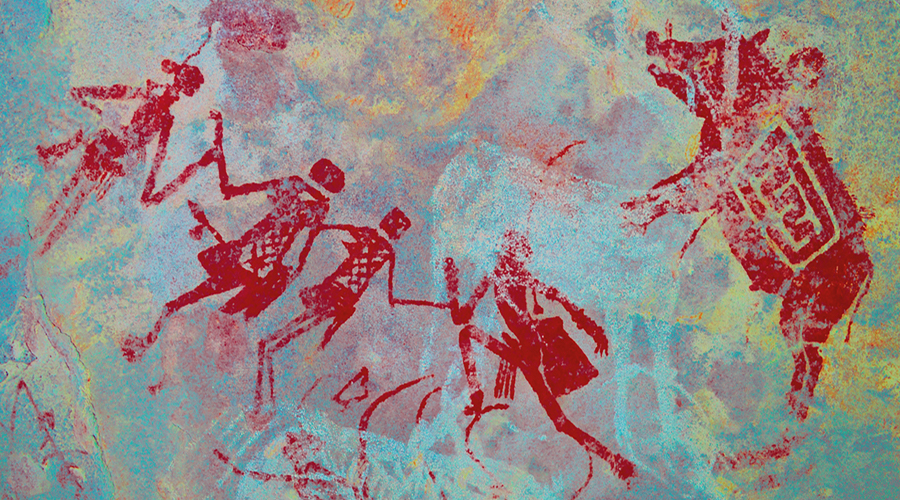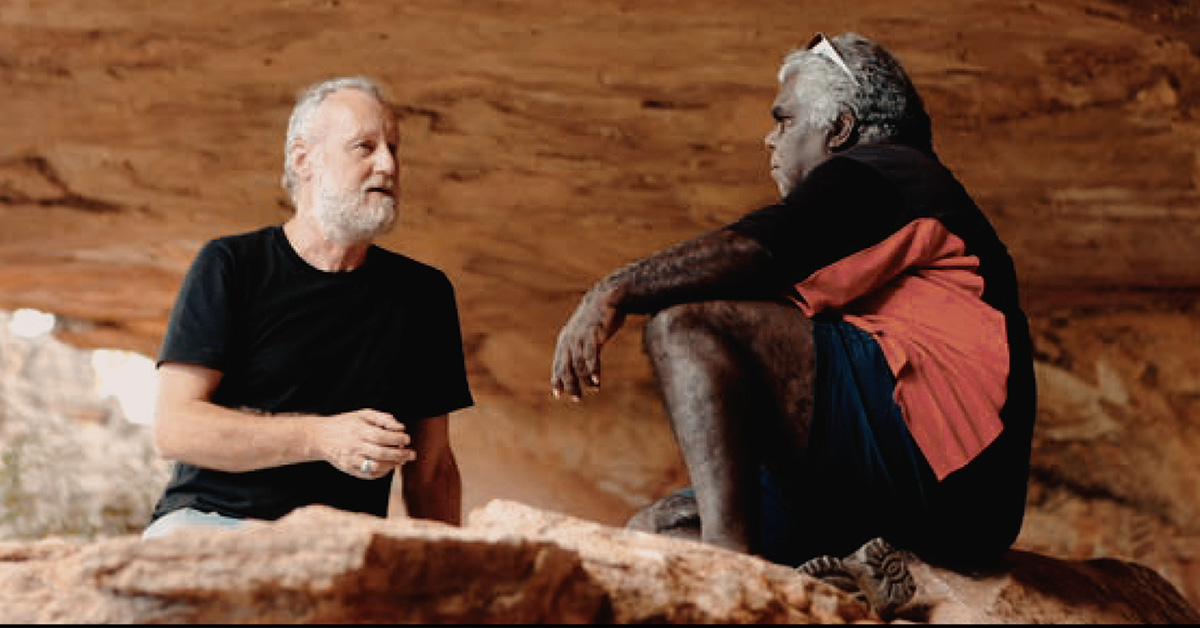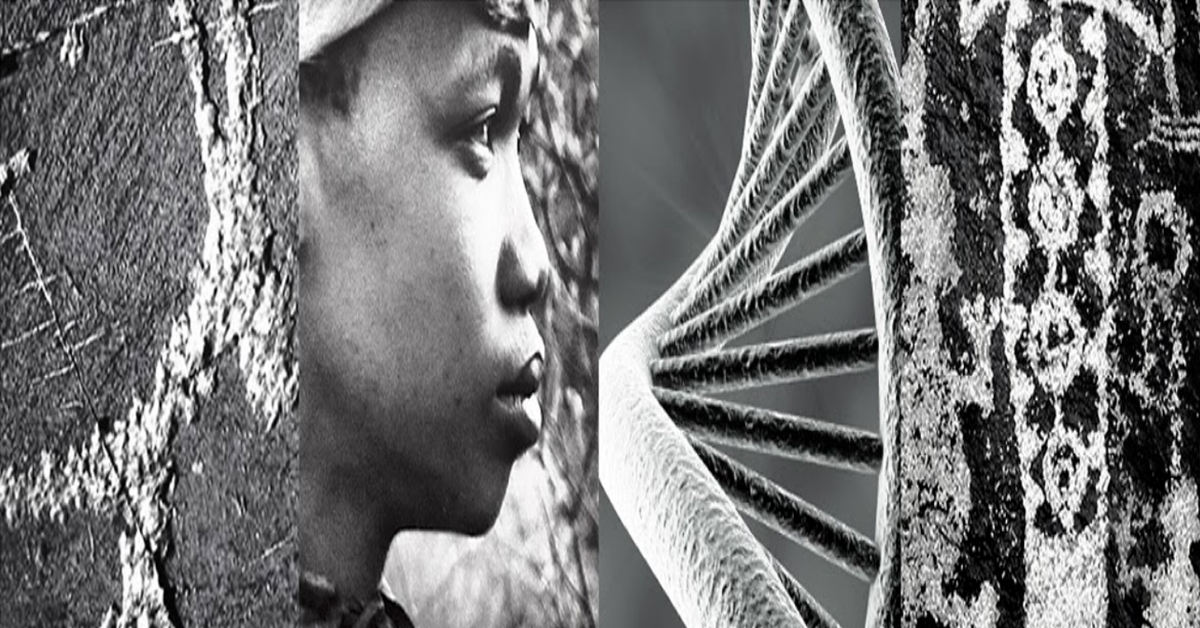


An article by Science reporter Jonathan Webb on BBC News - Early human ancestor Lucy died falling out of a tree - reports on new evidence which suggests that the famous fossilised human ancestor dubbed Lucy died falling from a great height, probably out of a tree.

Images: Marsha Miller, UT Austin & Science Photo Library
The 3.2 million-year-old hominin was found on a treed flood plain. Her species - Australopithecus afarensis (models of a female and a male A. afarensis shown below) - spent at least some of its life in trees (feeding, nesting, or for protection) but Lucy walked upright on the ground and had lost her ancestors' ape-like, grasping feet. CT scans have shown injuries to her bones similar to those suffered by modern humans in similar falls. Researchers from the US and Ethiopia describe a vertical deceleration event, which they argue caused Lucy's death, as published in the journal Nature.
CT scans reveal cause of Lucy's death #AustralopithecusAfarensis #hominin #Lucy https://t.co/eHfhywjPXN pic.twitter.com/H8rlbpEZV0
— Bradshaw Foundation (@BradshawFND) August 30, 2016
Images: John Kappelman, UT Austin & Adrienne Witzel, UT Austin
Lead author John Kappelman from the University of Texas at Austin points to a crushed shoulder joint (as when humans reach out arms to break a fall), as well as fractures of the ankle, leg bones, pelvis, ribs, vertebrae, arm, jaw and skull. These are consistent with orthopaedic surgical literature about fall victims who have come down from height.
It was during a brief break in Lucy's 2008 tour of US museums that Prof Kappelman (below) and his colleagues found time for the scans. They were able to get permission from the Ethiopian government and after the exhibit closed down in Houston, they brought Lucy to the UT campus - in secret, for security purposes - where there is a high-resolution CT scan.

Images: Sissi Janet Mattox & Science Photo Library
Scanning for 10 days, Lucy's injuries came to light. By peering inside the bones in minute detail, the scanner showed that several of the fractures were 'greenstick' breaks. The bone had bent and snapped like a twig: something that only happens to healthy, living bones. So the injuries happened while Lucy was alive, but significantly they also show no signs of healing, therefore these misfortunes apparently befell the small creature at the very time of her death.
A fatal fall also fits with the fact that Lucy's tiny first rib is broken. This bone is small and heavily protected. With rib fractures, the first rib is the most rarely fractured. It takes a high amount of chest trauma.
But the shattered top of the fossilised humerus bone - Lucy's upper arm - is the most compelling piece of the puzzle. According to this hypothesis, it tells us that Lucy was conscious when she reached out her arms to break her fall.
View more on Australopithecus afarensis in the ORIGINS section:
http://www.bradshawfoundation.com/origins/australopithecus_afarensis.php
by Bradshaw Foundation
Tuesday 21 March 2023
by Bradshaw Foundation
Tuesday 07 February 2023
by Bradshaw Foundation
Thursday 19 May 2022
by Bradshaw Foundation
Tuesday 19 October 2021
by Bradshaw Foundation
Friday 25 June 2021
by Bradshaw Foundation
Monday 09 November 2020
by Bradshaw Foundation
Tuesday 03 November 2020
by Bradshaw Foundation
Wednesday 28 October 2020
by Bradshaw Foundation
Tuesday 23 June 2020
by Bradshaw Foundation
Thursday 04 June 2020
by Bradshaw Foundation
Thursday 14 May 2020
by Bradshaw Foundation
Tuesday 12 May 2020
by Bradshaw Foundation
Wednesday 19 February 2020
by Bradshaw Foundation
Tuesday 21 January 2020
by Bradshaw Foundation
Monday 20 January 2020
by Bradshaw Foundation
Thursday 28 November 2019
by Bradshaw Foundation
Tuesday 21 March 2023
by Bradshaw Foundation
Tuesday 07 February 2023
by Bradshaw Foundation
Thursday 19 May 2022
by Bradshaw Foundation
Tuesday 19 October 2021
by Bradshaw Foundation
Friday 25 June 2021
by Bradshaw Foundation
Monday 09 November 2020
by Bradshaw Foundation
Tuesday 03 November 2020
by Bradshaw Foundation
Wednesday 28 October 2020
by Bradshaw Foundation
Tuesday 23 June 2020
by Bradshaw Foundation
Thursday 04 June 2020
by Bradshaw Foundation
Thursday 14 May 2020
by Bradshaw Foundation
Tuesday 12 May 2020
by Bradshaw Foundation
Wednesday 19 February 2020
by Bradshaw Foundation
Tuesday 21 January 2020
by Bradshaw Foundation
Monday 20 January 2020
by Bradshaw Foundation
Thursday 28 November 2019
Friend of the Foundation











